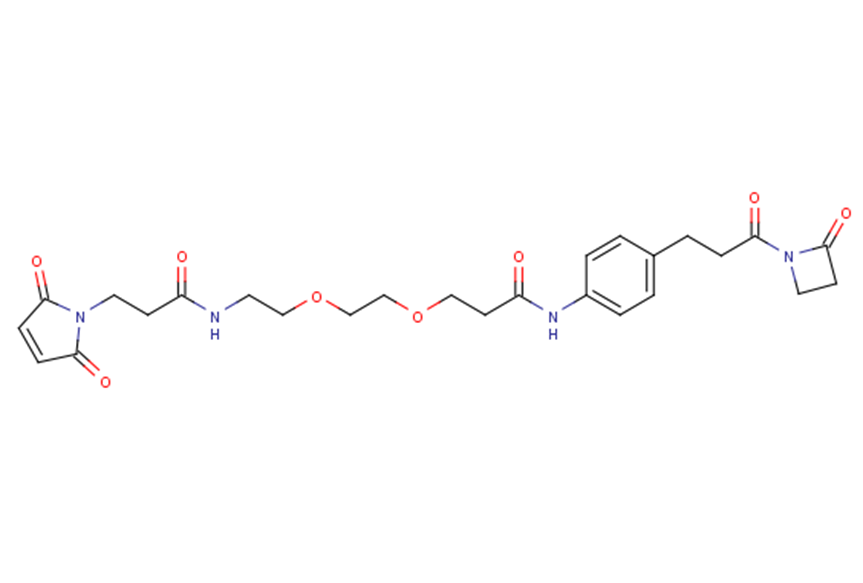
PF-05231023
CAS No. 1037589-69-7
PF-05231023( —— )
Catalog No. M22505 CAS No. 1037589-69-7
PF-05231023 is a long-acting fibroblast growth factor 21 (FGF21) analog and is an FGF21-receptor agonist. It is also suitable for development as a potential treatment for T2DM. PF-05231023 is a analog of long-acting fibroblast growth factor 21.
Purity : >98% (HPLC)
 COA
COA
 Datasheet
Datasheet
 HNMR
HNMR
 HPLC
HPLC
 MSDS
MSDS
 Handing Instructions
Handing Instructions
| Size | Price / USD | Stock | Quantity |
| 2MG | 40 | In Stock |


|
| 5MG | 68 | In Stock |


|
| 10MG | 110 | In Stock |


|
| 25MG | 205 | In Stock |


|
| 50MG | 335 | In Stock |


|
| 100MG | 537 | In Stock |


|
| 200MG | 807 | In Stock |


|
| 500MG | Get Quote | In Stock |


|
| 1G | Get Quote | In Stock |


|
Biological Information
-
Product NamePF-05231023
-
NoteResearch use only, not for human use.
-
Brief DescriptionPF-05231023 is a long-acting fibroblast growth factor 21 (FGF21) analog and is an FGF21-receptor agonist. It is also suitable for development as a potential treatment for T2DM. PF-05231023 is a analog of long-acting fibroblast growth factor 21.
-
DescriptionPF-05231023 is a long-acting fibroblast growth factor 21 (FGF21) analog and is an FGF21-receptor agonist. It is also suitable for development as a potential treatment for T2DM. PF-05231023 is a analog of long-acting fibroblast growth factor 21.PF-05231023 suppresses oxidative-stress-induced inflammation in photoreceptors. PF-05231023 decreases the variability of retinal NRF2 levels and displays a trend (non-significant) towards increased NRF2 levels in Akita mice. PF-05231023 decreases retinal IL-1β mRNA expression in Akita mice. PF-05231023 enhances cone-specific arrestin4 expression in Akita mice. PF-05231023 restores photoreceptor morphology in Akita mice. Administration of native FGF21 and PF-05231023 (3?mg/kg or 10?mg/kg; subcutaneously twice a week for two weeks) improves glucose tolerance and liver insulin sensitivity in Zucker rats. PF-05231023 (10 mg/kg; intraperitoneally injected) reduces retinal inflammation in diabetic mice.(In Vivo):Animal Model: Eight week old Zucker ratsDosage: 3?mg/kg and 10?mg/kg.Administration: Subcutaneously twice a week for two weeks.Result: There was no change of BW observed, and food intake was not changed in the treated groups compared to control. Caused a significant decrease of glucose excursion during the oral glucose tolerance test (OGTT) compared to control.
-
In Vitro——
-
In VivoAnimal Model:Eight week old Zucker rats Dosage:3?mg/kg and 10?mg/kg Administration:Subcutaneously twice a week for two weeksResult:There was no change of BW observed, and food intake was not changed in the treated groups compared to control. Caused a significant decrease of glucose excursion during the oral glucose tolerance test (OGTT) compared to control. Animal Model:7-to-8-month-old Akita mice with type 1 diabete model Dosage:10 mg/kg Administration:Intraperitoneally injected; twice a week; for four weeks Result:Administration improved retinal function in diabetic Akita mice.
-
Synonyms——
-
PathwayOthers
-
TargetOther Targets
-
RecptorFGF21-receptor
-
Research Area——
-
Indication——
Chemical Information
-
CAS Number1037589-69-7
-
Formula Weight528.55
-
Molecular FormulaC26H32N4O8
-
Purity>98% (HPLC)
-
SolubilityDMSO:125 mg/mL (236.50 mM; Need ultrasonic)
-
SMILESO=C(CCN1C(=O)C=CC1=O)NCCOCCOCCC(=O)Nc1ccc(CCC(=O)N2CCC2=O)cc1
-
Chemical Name——
Shipping & Storage Information
-
Storage(-20℃)
-
ShippingWith Ice Pack
-
Stability≥ 2 years
Reference
1. Dong JQ, et al. Pharmacokinetics and pharmacodynamics of PF-05231023, a novel long-acting FGF21 mimetic, in a first-in-human study. Br J Clin Pharmacol. 2015 Nov;80(5):1051-63.
molnova catalog



related products
-
4'-Methoxyresveratro...
4'-Methoxyresveratrol is a natural product form the roots of Rheum palmatum Lhas significant hypoglycemic anti-inflammatory and antioxidant effects.
-
Anethole trithione
Anethole trithione is a drug used in the treatment of dry mouth, being studied in the treatment of Y.
-
5-hydroxytryptamine
5-hydroxytryptamine is a natural product from animals.



 Cart
Cart
 sales@molnova.com
sales@molnova.com


